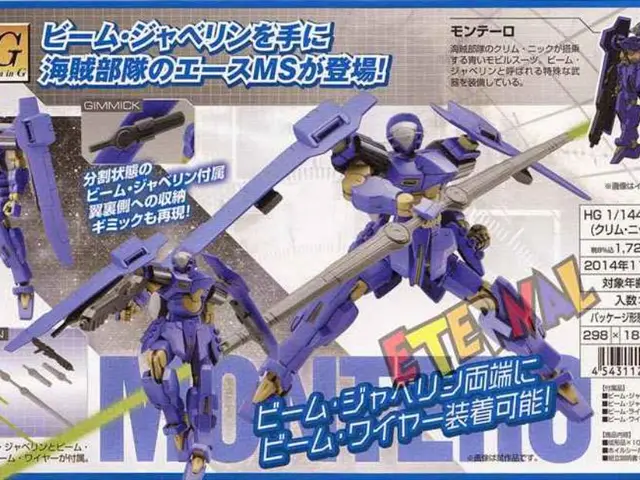Can Virtual Reality Integration in Manufacturing Drive Up Sales?
Breaking the Boundaries: How Virtual Reality Transforms Manufacturing and Sales
Wondering if virtual reality (VR) could revolutionize manufacturing and sales? The question's been buzzing in the minds of top manufacturers worldwide. From being a sci-fi dream to a game-changer in reality, VR has now burst onto the scene as a potent tool in manufacturing.
Join us on an exciting journey as we explore how VR could potentially reshape the future of manufacturing sales with our virtual reality app development company. We delve deep into the dynamic relationship between VR and manufacturing, examining its influence on manufacturing processes and sales performance.
VR Meets Manufacturing: A Rapidly Growing Relationship
The integration of VR in manufacturing isn't just a passing trend; it's an industry with immense market potential that's on the rise. Here are some eye-opening statistics that speak volumes about VR's growing importance in manufacturing.
- In 2018, the global virtual reality market in manufacturing stood at USD 924.7 million[1].
- Projections suggest an astounding increase to USD 14,887.0 million by 2026, representing a staggering compound annual growth rate (CAGR) of 39.2% during the forecast period[1].
- A survey of US manufacturers shows a significant shift towards embracing VR technology, with more than one-third either currently using it or planning to incorporate it within the next three years[2].
VR's Key Benefits in Manufacturing
From improved product design to streamlined collaboration, VR brings numerous benefits to manufacturers that contribute to efficiencies, safety, and competitiveness. Here are five key advantages and how they impact manufacturing:
- Precision Product Design: VR allows designers to create intricate 3D models, enabling them to visualize, interact with, and tweak products in a virtual environment, accelerating the design process and eliminating the need for physical prototypes[3].
- Immersive Training: With VR, employees can undergo training in a realistic, yet controlled and secure virtual environment. This cutting-edge training is vital for high-risk tasks, reducing accidents during training[3].
- Seamless Collaboration: By enabling real-time collaboration among teams, regardless of their physical locations, VR makes communication easy, boosting decision-making, and fostering a more cohesive development process[3].
- Cost Reduction: VR helps manufacturers save by reducing reliance on physical prototypes, streamlining the design process, and preventing costly mistakes[3].
- Risk Mitigation: By allowing thorough testing and analysis within a virtual environment before any real-world implementation, VR helps manufacturers identify and address potential risks, saving time and resources[3].
Real-World VR Applications in Manufacturing
From autos to aerospace, VR has made its mark in various manufacturing industries. Here are some real-world examples showcasing the transformative impact of VR in manufacturing:
- Automotive Design and Assembly (Ford Motor Company): VR labs help Ford designers work seamlessly on vehicle design and assembly processes, reducing development time and costs[3].
- Aerospace Industry (Boeing): Engineers use VR to design and test complex aircraft systems, ensuring that components are fully integrated and accessible[3].
- Heavy Machinery (Caterpillar): VR is used for product development and operator training, making it easier to test and refine designs, and prepare operators for real-world operations[3].
- Consumer Electronics (Siemens): VR assists Siemens in visualizing new products and simulating manufacturing processes, contributing to more efficient product development cycles and reduced manufacturing costs[3].
Embracing VR for Higher Sales Performance
While VR's role in design and production in manufacturing is well-established, it also promises to be a powerful sales and marketing asset. By creating immersive, interactive experiences, manufacturers can leverage VR to elevate their sales strategies:
- Engaging Product Demonstrations: By allowing potential customers to explore products in a fully immersive virtual environment, manufacturers can boost customer engagement, leading to increased sales[3].
- Customized Experiences: With VR, manufacturers can offer customers a chance to customize products to their preferences in a virtual environment, creating a memorable and personalized sales experience[3].
- Virtual Factory Tours: By offering virtual tours of manufacturing facilities, manufacturers can forge stronger connections with customers, build trust, and foster increased brand loyalty[3].
Amplifying Sales Effectiveness with VR
Looking to maximize the impact of VR on sales? Consider these tips to make the most of your VR technology:
- Gather Customer Feedback: Continually collect customer insights from virtual experiences to understand preferences and behaviors and refine both product designs and marketing strategies[3].
- Reach a Global Audience: Utilize VR to offer virtual product demonstrations and tours to remote customers who might not have access to physical showrooms or manufacturing sites[3].
- Weave a Tale: Use VR to tell your product or brand story, connecting with customers on an emotional level and creating a more memorable impression[3].
- Empower Your Sales Team: Equip your sales team with the skills needed to guide customers through VR experiences effectively, addressing questions and highlighting key product features[3].
Unmasking the Technologies That Power VR in Manufacturing
Leveraging VR in manufacturing requires specialized technology support. Here's a look at some essential components required for robust VR systems:
Hardware Essentials
- VR Headsets: High-quality devices, like the Oculus Rift or HTC Vive, offer immersive virtual environments for VR applications in manufacturing[3].
- Motion Tracking Systems: These systems capture user movements in a VR environment, enhancing the realism and interactivity of the experience[3].
- Powerful Computers or Consoles: High-performance computers and gaming consoles are needed to run complex VR software without lag, ensuring smooth and responsive user experiences[3].
Software Essentials
- VR Development Platforms: Unity or Unreal Engine are popular development environments that provide the necessary tools and libraries to create detailed, interactive 3D virtual worlds[3].
- Simulation and Modeling Software: Specialized software allows manufacturers to create accurate virtual replicas of their products or manufacturing processes[3].
- Collaboration Tools: To foster effective communication among team members in VR environments, collaboration tools like multi-user environments and voice chat are integrated into VR applications[3].
- Analytics and Feedback Systems: These tools help manufacturers track user interactions within VR environments, aiding in product design refinements, improving training programs, and optimizing the overall user experience[3].
Integration and Support Technologies
- Cloud Computing and Storage: Cloud technologies assist in storing, managing, and hosting VR environments for remote access[3].
- Network Infrastructure: Strong network infrastructure is critical to support the data transfer requirements of VR applications, especially in multiplayer scenarios[3].
- Security Measures: Safeguarding valuable manufacturing data is essential, so encryption, secure data transmission, and access controls are crucial for secure VR applications[3].
The Future Shines Bright for VR in Manufacturing
As VR technology evolves, its role in manufacturing is set to grow even more remarkable. Here are some key trends indicating the future of VR in manufacturing:
- Collaborative VR Training: A focus on collaborative VR training, where multiple users engage in the same VR environment for teamwork and more interactive training scenarios[3].
- Increased Accessibility: VR technology becoming more affordable and user-friendly, making it accessible to manufacturers of all sizes, fostering broader innovation[3].
- Automation and Quality Control: Integration of VR with automated systems to optimize quality control processes and reduce errors in production lines[3].
- Real-Time Repair and Maintenance: VR to play a crucial role in maintenance and repair operations, providing real-time data and visual guides to help technicians efficiently fix machinery[3].
- Integration with 5G and IoT: Integrating VR with 5G networks and the Internet of Things (IoT) will enable more seamless and robust VR experiences, improved by 5G's high-speed, low-latency communication and IoT's real-time data gathering capabilities[3].
Embrace the Future with Our VR Expertise
With deep experience in developing VR systems, our virtual reality app development company can help you harness VR potential, overcome manufacturing challenges, and grow your business. If you're ready to test VR capabilities on your shop floors, don't hesitate to contact us.
Ready to dive into the VR revolution? Subscribe to our updates and let's explore the future of manufacturing together.
Enrichment Data:
Overall:Virtual reality (VR) has significantly impacted the manufacturing industry by enhancing operational efficiency, improving training, and streamlining processes. The benefits of VR for manufacturers include:
- Increased Efficiency: Improved production speed and reduced errors by optimizing workflows, training procedures, and error reduction.
- Cost Savings: Decreased reliance on physical prototypes resulting in increased savings.
- Enhanced Product Quality: Reduced risks of producing defective products due to virtual testing and real-time feedback.
- Better Safety: Reduced incidents of workplace hazards as a result of immersive, controlled, and safe training environments.
- Competitive Advantage: Early adoption of VR technology can provide a competitive edge by improving operational efficiency, reducing costs, and delivering high-quality products.
- In the manufacturing industry, the integration of virtual reality (VR) has escalated from a passing trend to a burgeoning market with immense potential, with the global virtual reality market in manufacturing standing at USD 924.7 million in 2018 [1].
- Projections suggest a staggering increase in the market to USD 14,887.0 million by 2026, representing a compound annual growth rate (CAGR) of 39.2% during the forecast period [1].
- A survey of US manufacturers shows that over one-third are either currently employing VR technology or plan to incorporate it within the next three years [2].
- Precision product design, immersive training, seamless collaboration, cost reduction, and risk mitigation are five key advantages of VR in manufacturing that contribute to operational efficiencies, safety, and competitiveness.
- In the automotive, aerospace, heavy machinery, and consumer electronics sectors, VR has made a profound impact by boosting product design, optimizing assembly processes, and enhancing training procedures.
- Manufacturers can utilize VR to create immersive product demonstrations, provide customized experiences, and offer virtual factory tours to elevate their sales strategies, boost customer engagement, and foster greater brand loyalty.
- To maximize the impact of VR on sales, manufacturers should gather customer feedback, reach a global audience, weave a compelling product or brand story, and equip their sales teams with the skills needed to effectively guide customers through VR experiences.
- Essential hardware components for robust VR systems in manufacturing include VR headsets, motion tracking systems, and powerful computers or consoles. Similarly, software tools such as VR development platforms, simulation and modeling software, and collaboration tools are crucial.
- Integration and support technologies like cloud computing and storage, network infrastructure, and encryption are vital in securing valuable manufacturing data in VR applications.
- In the future, collaborative VR training, increased accessibility, automation and quality control integration, real-time repair and maintenance, and integration with 5G and IoT are key trends expected to further revolutionize the VR landscape in manufacturing.
- With deep experience in developing VR systems, our virtual reality app development company can aid manufacturers in harnessing VR potential, overcoming manufacturing challenges, and growing their business by test driving VR capabilities on shop floors.
- Stay updated on the future of manufacturing by subscribing to our updates and dive into the VR revolution together.






